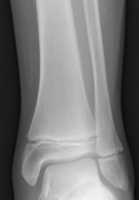Author Interviews, Environmental Risks, JAMA, Pediatrics / 24.08.2020
Children Residing at Higher Altitudes Are Born Shorter and Have Lower Growth Trajectory
MedicalResearch.com Interview with:
Kaleab Baye PhD
Center for Food Science and Nutrition
Addis Ababa University
MedicalResearch.com: What is the background for this study?
Response: Reducing child stunting is one of the most important objectives of the Sustainable development goals (SDGs) and the World Health Assembly (WHA). Progress is routinely measured using anthropometric indices such as height-for-age z score that compare child height to the World Health Organization (WHO) growth standards. Such comparisons rely on the assumption that children living in ideal home environment that promotes adequate growth have the same growth potential, irrespective of their genetic make-up. This assumption was confirmed by the Multicenter Growth Reference Study (MGRS), which was the origin of the development of the growth standards. However, the MGRS excluded sites above 1500 m above sea level (asl); hence, it remains unclear whether the widely adopted WHO growth standards are applicable to populations above the 1500 m asl threshold.
This study investigated the association between altitude and linear growth faltering and evaluated whether the prescriptive WHO growth standards can apply to children residing at higher altitudes.
(more…)







